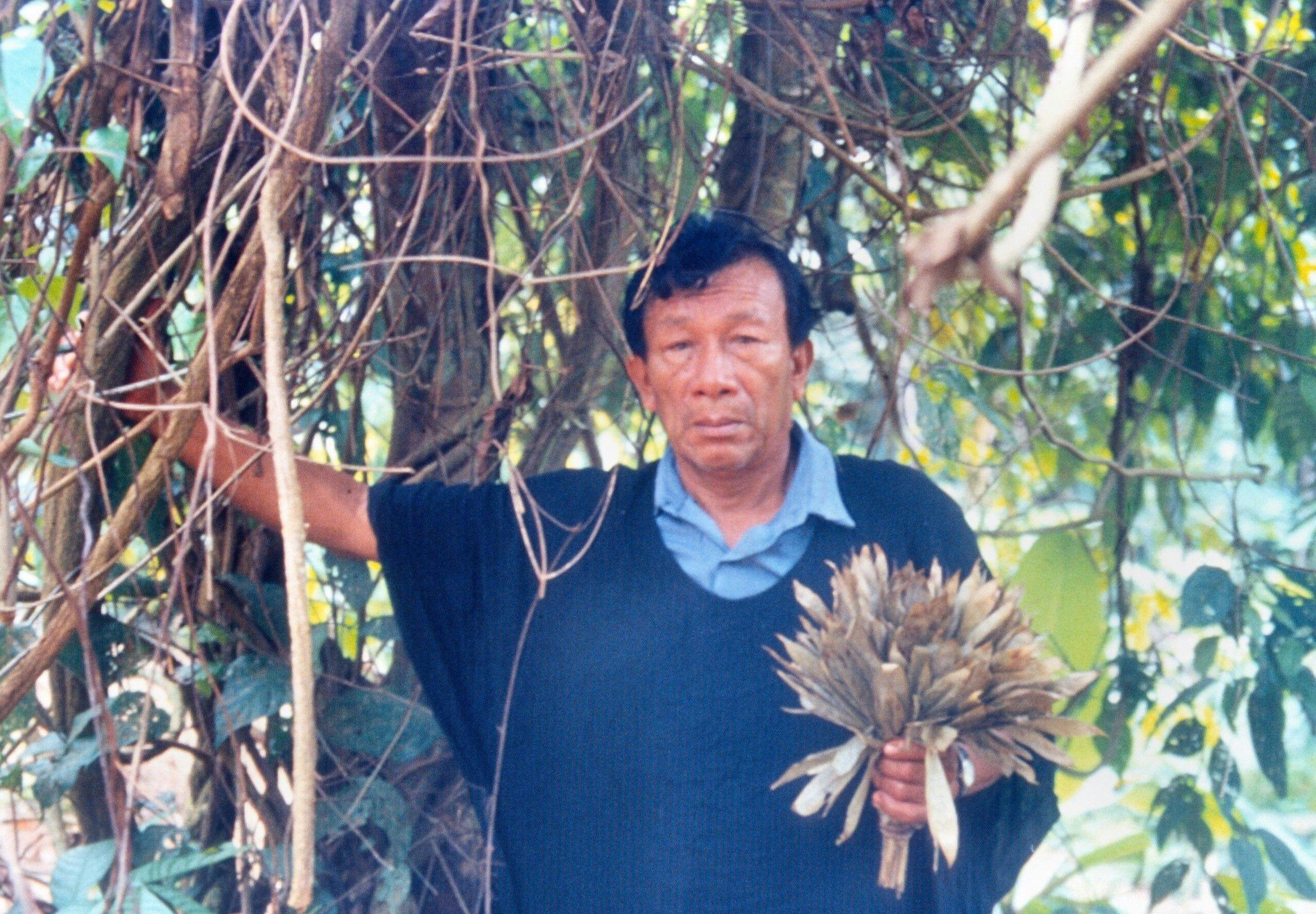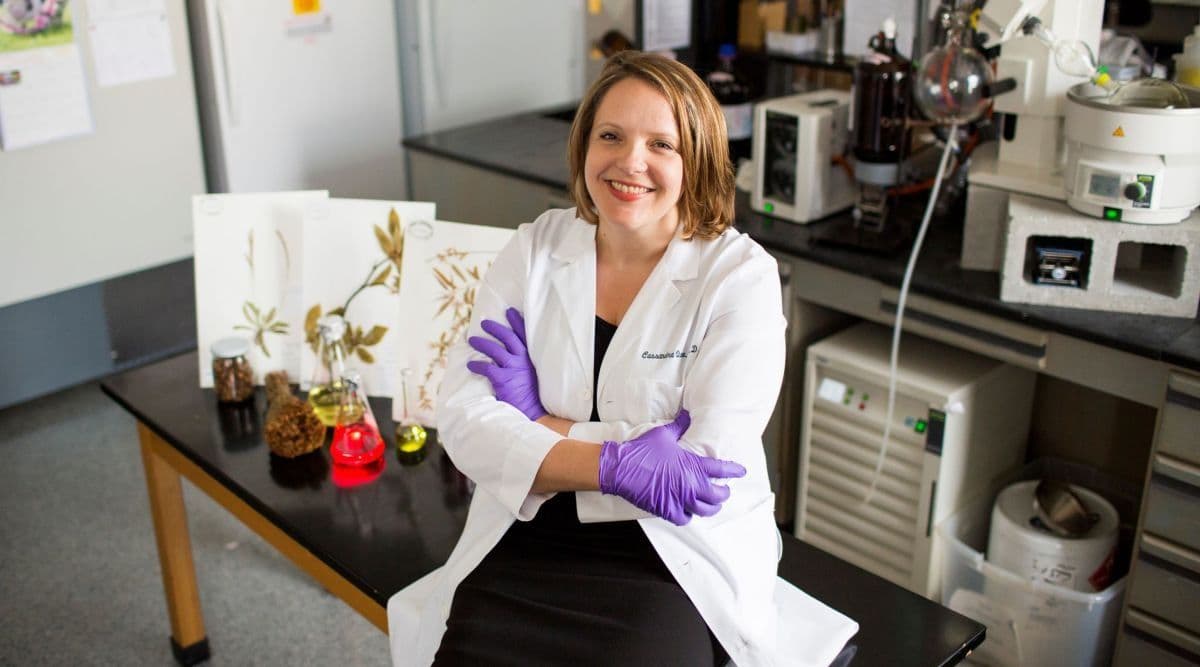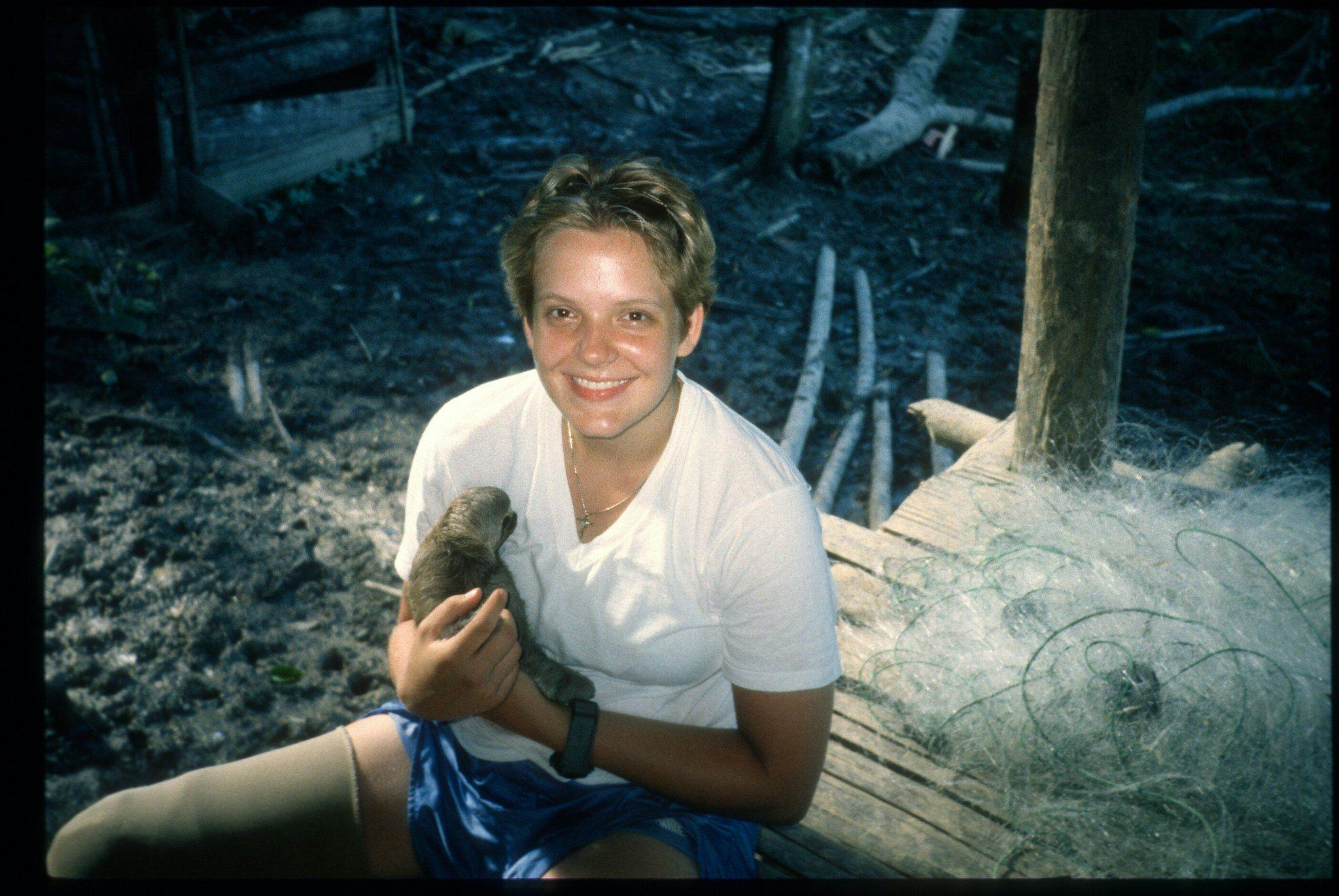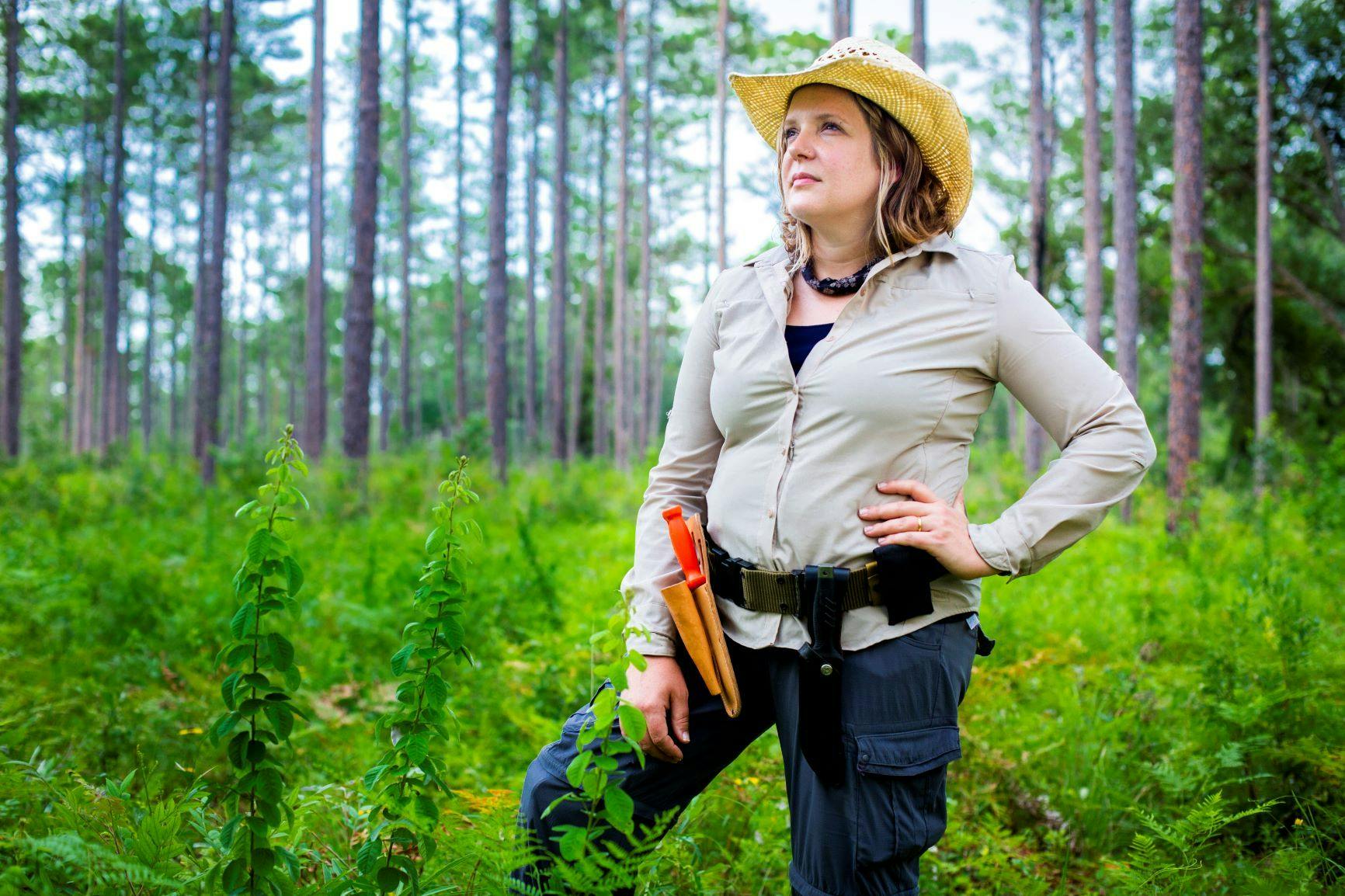I stood in the mailroom of my apartment building, a neatly folded letter clutched in my hand. I was a senior in college and it was a letter of acceptance to medical school. But instead of feeling elated or ecstatic... I felt ambivalent. How could I feel no jolts of joy over something I'd literally worked my entire life towards accomplishing? For me, it all began with some very special trees.
I grew up in the countryside in a small rural town in Florida. As a child, when I wasn't getting dirty playing with my dog, Spot, you could find me perched high in the arms of a live oak tree. I would read books there or investigate the creatures crawling and hopping along the oak limbs: beetles, squirrels, and birds. I marveled at the abundance of epiphytes; my favorite were the long grey tendrils of Spanish moss that dangled from the tree, reminding me of an old man's beard swaying in the wind.
Looking down from my perch, I saw that Spot snoozed at his guard post, curled up next to a set of battered wooden crutches I'd left propped against the tree trunk. At birth, my parent's greatest hope was that I could someday walk. I was born with the lower portion of my right leg underdeveloped, the tibia above it short, and the fibula totally missing. An infection that followed the amputation of my leg at the age of three nearly killed me. The scores of surgeries I endured allowed me to eventually walk with a prosthetic leg, but in between recoveries, I relied on crutches to get around.
In school, I was placed with other students in classes that pushed the limits of our creativity, inspiring us to think bigger and deeper. Despite the lessons in creative thought, there were really only two choices that we were encouraged to pursue: law or medicine. Based on my own vast experiences as a patient, I chose medicine and was determined to someday become a surgeon.
In college, I was a dedicated premedical student, spending hours each day memorizing facts from the disciplines of chemistry, physics and biology. In anthropology coursework, I began to learn more about the many different systems of medicine in the world, and my eyes began to open to the idea that medicine could occur in many forms and that therapies could be derived from nature. When an opportunity to experience another system of medicine popped up, I lept at.
And so, seated on a rickety bench propped up against a tree trunk, I waited for the medicine man.
A large bush offered a shady respite from the sweltering midday sun, its branches adorned with dark glistening leaves and spiky fire-engine-red fruit pods the size of a chicken egg. It reminded me of a Christmas tree laden with holiday ornaments. Three blue morpho butterflies swooped across the path nearby, their large metallic wings glistening in the light with each flutter through the air. The diversity of life was a delight to every one of my senses, surrounding me from the dark-blue skies to the muddy earth caked beneath my boots.

The medicine man was named Don Antonio. I sat on the bench while he fetched something from his palm-thatched hut. As I waited, I tried to knock off some of the mud glommed onto my hiking boots from our expedition into the jungle that morning. My beat-up backpack lay beside me on the bench, stuffed with gear and tools: camera equipment, clippers, water bottle, field guide, notebook, and pen.
I arrived to this remote part of the Peruvian Amazon just a week prior, first by plane from Atlanta to Lima, then Lima to Iquitos, before taking a motorboat up river. Iquitos is a remote jungle town inaccessible by road but still the sixth most populated city in Peru. The boat traveled up the Amazon river and then moved northwest into the Napo River, nearly reaching the Ecuadorean border before arriving at Explorama Lodges on the Sucusari River. It was June of 1999, I'd just turned 21, and it was my first trip to South America.
As a research intern, I was lending a hand in the gardens run by Don Antonio and his son, Gilmer. I was eager—perhaps overly so—to learn about this other form of medicine. Yet, at the heart of things, I was also a skeptic. And my mind was teeming with questions. To start with, just how valuable was this plant knowledge? How effective were these forms of medicine? Could their use be explained by the simple principles of placebo or did they actually hold scientific merit and the clues for the development of new life saving therapies?
When Don Antonio ambled back to me, he reached up and grabbed one of the spiky pods that dangled above our heads. He was a few inches shorter than my five-foot-six-inch frame, with dark eyes, charcoal-black hair, and broad shoulders. Though his hands were calloused from his daily work with plants, he was no simple gardener. He was also an Ayahuasquero shaman who used plants to heal patients in surrounding villages. The garden gig was just his day job. He'd generously consented to share his treasure trove of knowledge concerning the healing powers of the plants of the region with me. Don Antonio told me that this plant was called achiote; I dutifully found it in the pages of my field guide. It was Bixa orellana in the Bixaceae family. As would become a habit between us, he spoke in a lilting voice, patiently explaining a plant's unique qualities. I was engrossed, scribbling my notes as fast as possible, eyebrows furrowed in a wavering mixture of concentration and confusion.
He broke open one of the pods along its seams, revealing waxy red seeds, about half the size of a cranberry, similar in color, but with a tougher texture. He began smashing the seeds inside of the split fruit pod with his finger, rubbing them around until a thick red paste was created. Intrigued, I took detailed notes on this process next to a sketch of the fruit. Next, he leaned close and started to apply the paste to my lips and around the sides of my mouth. As he worked, my mind raced. Could this be a remedy for viral cold sores? Chapped lips? Something else? He carefully took the bag he'd gathered from his hut and pulled out a small mirror, which he held up to my face. I saw that the red paste was smeared across my mouth and teeth. His sly grin broke into a broad smile and he pointed at me.
“Lipstick!” he said before his belly laugh nearly convulsed him to the forest floor. I began laughing, too. I looked like a clown.

People have used plants as their primary source of medicine since we first found our way out of the African savannas, walking on two legs. Of the estimated 374,000 species of plants on earth, records exist for the medicinal use of at least 33,000. That's 9% of all plant life we know of today! Some of the earliest written records of medicinal plant use dates back to ancient Egypt, and in one scroll, there are some 700 plant formulas and remedies for treating various ailments. The indigenous people of the Amazon Basin have also used natural resources to effectively manage health and treat disease for millennia. Which ingredients to use and when to harvest, how to prepare them and determine the dose, and when to prescribe it is part of a vast body of knowledge passed down in this part of the world from shaman to apprentice through oral traditions.
There are an estimated four hundred tribal groups living in the Amazon— each with their own distinct language, territory, culture, worldview, and system of medicine, and their medical traditions are as varied as the people themselves. With each tribe lost to the influences of Western culture and globalization, with each language lost, and with each shaman who dies without an apprentice to carry on the vast amount of knowledge, history, and traditions of their people, the world forever loses the equivalent of libraries full of wisdom. Don Antonio relied solely on the resources the forest provided and what he grew and harvested in his garden to treat his patients. He held a rich knowledge of medicinal properties of plants that he shared with me, from the use of Ojé fig latex to treat intestinal parasites to the blood red resin of the dragon's blood tree to heal wounds and treat diarrhea.
There's only one thing more amazing than the fact that humans, over thousands of years of trial and error, across cultures and landscapes, have sorted through hundreds of thousands of plant species and found at least 33,000 plants with medicinal properties: that scientists haven't really bothered to study the vast majority of them.
Ethnobotany is the scientific study of the relationships between people and plants. Like many ethnobotanists that traveled there before and after me, experiencing this incredibly biodiverse ecosystem and meeting the people who live there was a transformational experience for me. It was in the Amazon that my fascination with the connection between medicine, nature, and culture was solidified as I experienced the power and limitations of both traditional and Western medicine.
And that day back in my apartment mailroom as I held the letter that was my entry ticket to medical school—that path I'd always been encouraged to follow—I realized that instead of practicing medicine as a physician, I wanted to discover and develop new medicines inspired by nature. I found the courage to crumple the letter in my hand and took another, less traveled path. I became an ethnobotanist.

